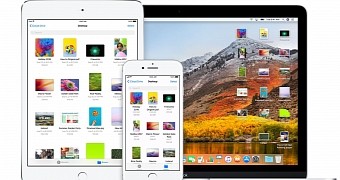Bloomberg News reports today that Apple plans to develop and build its own screens for future products to increase their battery life and offer customers slimmer devices with brighter displays.
According to the report, Apple is already manufacturing a limited number of screens for testing purposes in a facility in Santa Clara, California. People familiar with the matter told Bloomberg News that the Cupertino-based company has recently made some major investments in next-generation MicroLED screens.
MicroLED is an emerging flat-panel display technology consisting of arrays of microscopic LEDs that form the individual pixel elements and uses different light-emitting compounds designed to consume less power and offer brighter, more responsive lighting than the current OLED displays used in iPhone X.
Apple's first MicroLED devices could arrive in a few years
We heard nothing until now about Apple developing its own displays using MicroLED technology because the entire project was apparently kept very secret until now. The entire project was even close to being terminated because MicroLED screens are way more harder to manufacture than OLEDs, the report said.
However, it appears that Apple's engineers made a breakthrough in advancing the development of MicroLED screens, but it could take at least a couple of years until we will be able to get our hands on the first iPhone, iPad, and Macs with this type of displays that are brighter and less power-hungry.
Last year in September, Apple announced the 10th anniversary iPhone, known as the iPhone X. This was Apple's first iPhone model to ship with OLED screen technologies, which are reportedly causing headaches and eye strain among customers who have bought a device.
Recent reports claimed that OLED screens are the cause of sluggish iPhone X sales, so we have all the reasons to believe that the company is looking to produce its own screens using better display technology, such as MicroLED, as Bloomberg News' in-depth report suggests.

 14 DAY TRIAL //
14 DAY TRIAL //